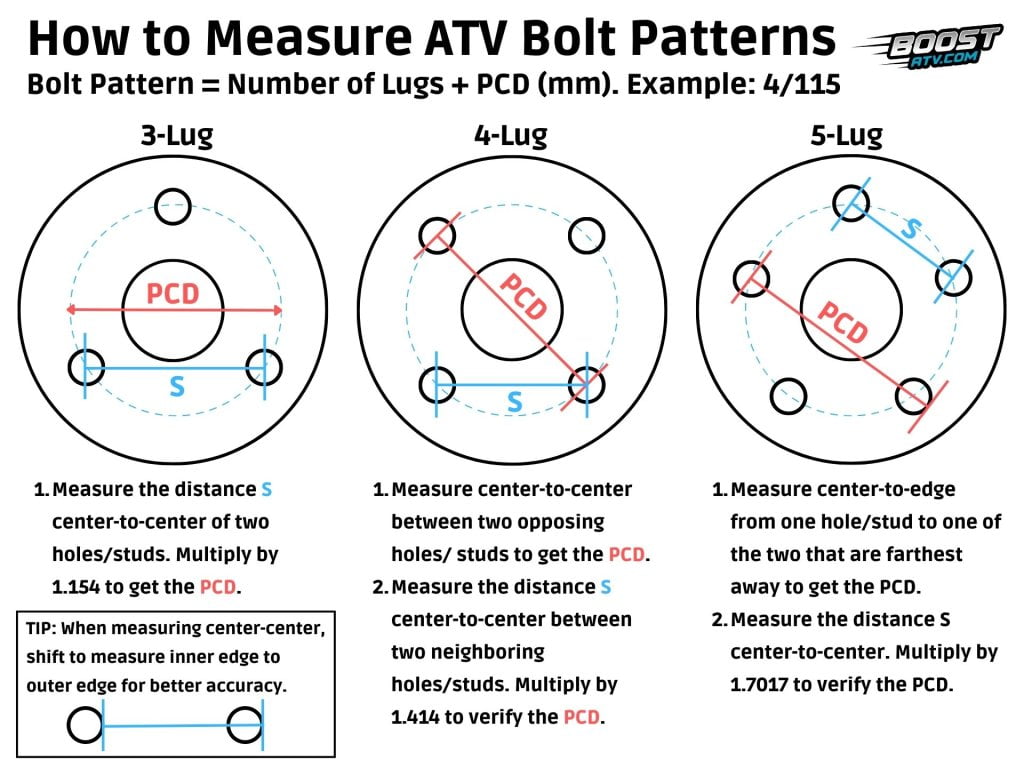Decoding the 8-Lug Bolt Pattern: Your Ultimate Guide

Ever stared at a hulking truck wheel and wondered about the intricacies of its attachment? The seemingly simple arrangement of lug nuts hides a crucial piece of information: the bolt pattern. For 8-lug wheels, understanding this pattern is paramount for safe and proper fitment. This guide dives deep into the world of 8-lug bolt patterns, demystifying the measurement process and highlighting its importance.
Determining the correct 8-lug bolt pattern is essential for matching wheels to your vehicle. An incorrect pattern can lead to wheel wobble, premature wear, and even catastrophic failure. Imagine the consequences of a loose wheel at highway speeds – a scenario easily avoided with accurate bolt pattern identification. This seemingly small detail plays a massive role in vehicle safety and performance.
While the concept of bolt patterns has existed as long as wheeled vehicles, the standardization and variety we see today evolved with the automotive industry. As vehicles became larger and heavier, the need for robust wheel attachments grew, leading to the development of multi-lug patterns like the 8-lug configuration commonly found on heavy-duty trucks and some SUVs. Precise measurement became crucial to ensure interchangeability and proper fit.
Measuring an 8-lug bolt pattern might seem daunting, but the process is surprisingly straightforward with the right tools and knowledge. Two primary methods exist: measuring from the center of one stud to the center of the stud directly across (for even-numbered patterns) or measuring from the center of one stud to the center of a non-adjacent stud and using a conversion chart (for odd-numbered patterns). With 8 lugs, you’ll use the first method.
Several factors can complicate the measurement process. Rust, corrosion, or damaged studs can obscure the true center, leading to inaccurate readings. Using the wrong measuring tool, like a flexible tape measure, can also introduce errors. It's crucial to clean the mounting surface and use a rigid measuring tool like a caliper or a straight ruler for accurate results.
Accurately determining your 8-lug bolt pattern offers several key benefits. Firstly, it ensures proper wheel fitment, preventing safety hazards and performance issues. Secondly, it simplifies the process of purchasing replacement wheels or upgrading to aftermarket options. Lastly, understanding your bolt pattern empowers you to make informed decisions about your vehicle's maintenance and modifications.
Step-by-Step Guide:
1. Clean the wheel mounting surface thoroughly to remove any dirt, rust, or debris.
2. Using a caliper or a straight ruler, measure the distance from the center of one stud to the center of the stud directly across.
3. Record the measurement. This is your 8-lug bolt pattern.
FAQs:
1. What is a bolt pattern? It's the arrangement of mounting holes on a wheel hub.
2. Why is it important? It ensures proper wheel fitment and safety.
3. What tools do I need? A caliper or straight ruler.
4. What if my studs are damaged? Consult a professional.
5. Can I measure with a tape measure? Not recommended, use a rigid tool.
6. Where can I find my bolt pattern information? Vehicle owner's manual or a mechanic.
7. Are all 8-lug patterns the same? No, there are variations.
8. What if I measure incorrectly? The wheel won't fit correctly, potentially causing safety issues.
Tips and Tricks:
Double-check your measurements for accuracy.
Consult your vehicle's owner's manual for the correct bolt pattern information.
In conclusion, understanding how to measure an 8-lug bolt pattern is an essential skill for any truck or heavy-duty vehicle owner. Accurate measurement ensures proper wheel fitment, preventing potential safety hazards and maximizing vehicle performance. By following the simple steps outlined in this guide, you can confidently determine your 8-lug bolt pattern and make informed decisions about wheel selection and maintenance. Remember, taking the time to measure accurately is a small investment that yields significant returns in safety and peace of mind. Don't underestimate the importance of this seemingly small detail – it plays a vital role in keeping you safe on the road. Consult a professional if you encounter any difficulties or are unsure about the process. Your safety and the proper functioning of your vehicle depend on it.
Perfecting your white shirt photo a guide for women
Remembering mary jane murphy exploring the significance of obituaries
Decoding gray matters sherwin williams 7066 the ultimate guide












